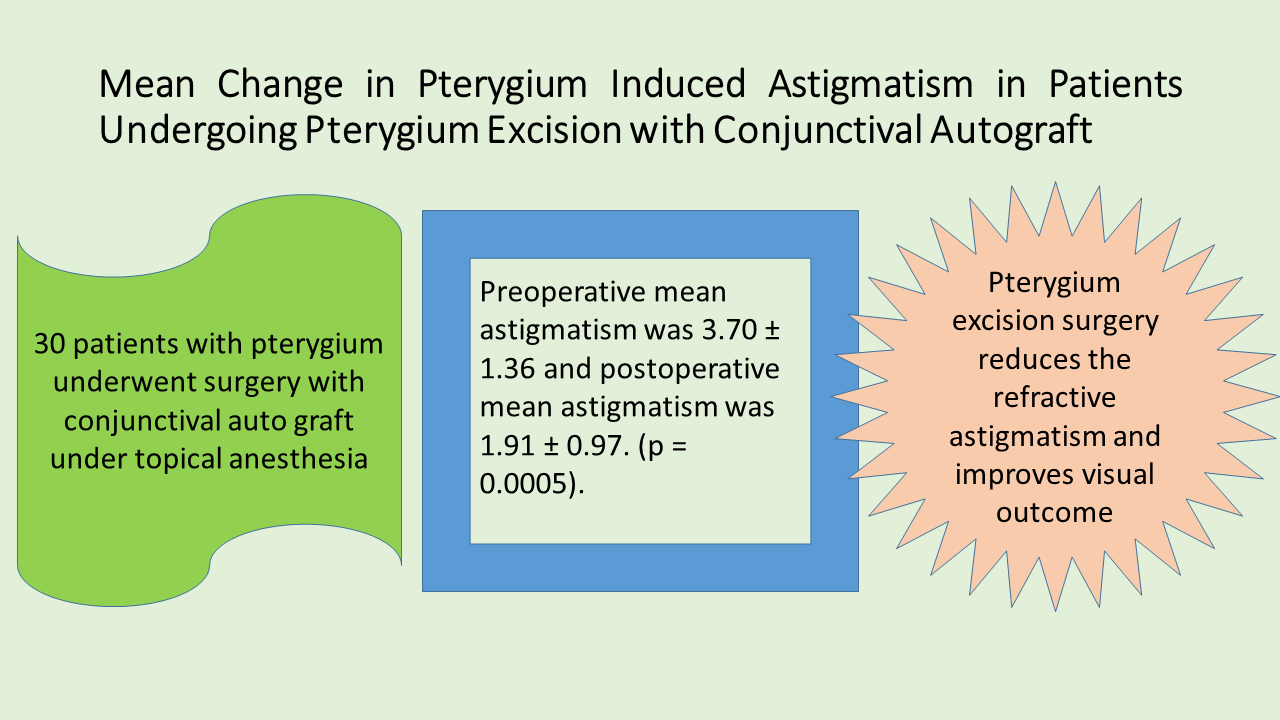Mean Change in Pterygium Induced Astigmatism in Patients Undergoing Pterygium Excision with Conjunctival Autograft
Doi: 10.36351/pjo.v38i4.1379
DOI:
https://doi.org/10.36351/pjo.v38i4.1379Abstract
Purpose: To determine the mean change in pterygium induced astigmatism in patient undergoing pterygium excision with conjunctival auto graft.
Study Design: Quasi Experimental Study.
Place and Duration of Study: Department of ophthalmology Dow University of Health Sciences/CHK from March 2018 to November 2018.
Methods: Thirty patients with pterygium were selected through non-probability consecutive sampling. All patients meeting inclusion criteria were enrolled after taking written consent. History of duration of symptoms and co-morbidity was taken. All surgeries were performed by consultant with more than 5 years’ experience with conjunctival auto graft under topical anesthesia. Patient was followed up after one week, 15 days and then monthly for four months with the final outcome at the end of fourth month. Difference between preoperative and postoperative astigmatism was taken as mean change. Data was analyzed on SPSS version 21. Mean and Standard deviation were calculated for all quantitative variables like age, astigmatism (keratometric reading) and duration of symptoms. Frequency and percentage was calculated for gender and grade of pterygium. P < 0.05 was considered significant.
Results: Mean age of the patients was 50.07 ± 12.48 years. There were 19 (63.33%) males and 11 (36.67%) females. Preoperative mean astigmatism was 3.70 ± 1.36 and postoperative mean astigmatism was 1.91 ± 0.97. Post-operative mean astigmatism was significantly low as compare to preoperative astigmatism (p = 0.0005).
Conclusion: This study concludes that successful pterygium excision surgery reduces the pterygium induced refractive astigmatism and improves the visual outcome either by reducing the astigmatism or by removal of the pterygium from the visual axis as in Grade IV pterygium.

Downloads
Published
How to Cite
Issue
Section
License
Copyright (c) 2022 Muhammad Adnan Shaikh

This work is licensed under a Creative Commons Attribution-NonCommercial 4.0 International License.






